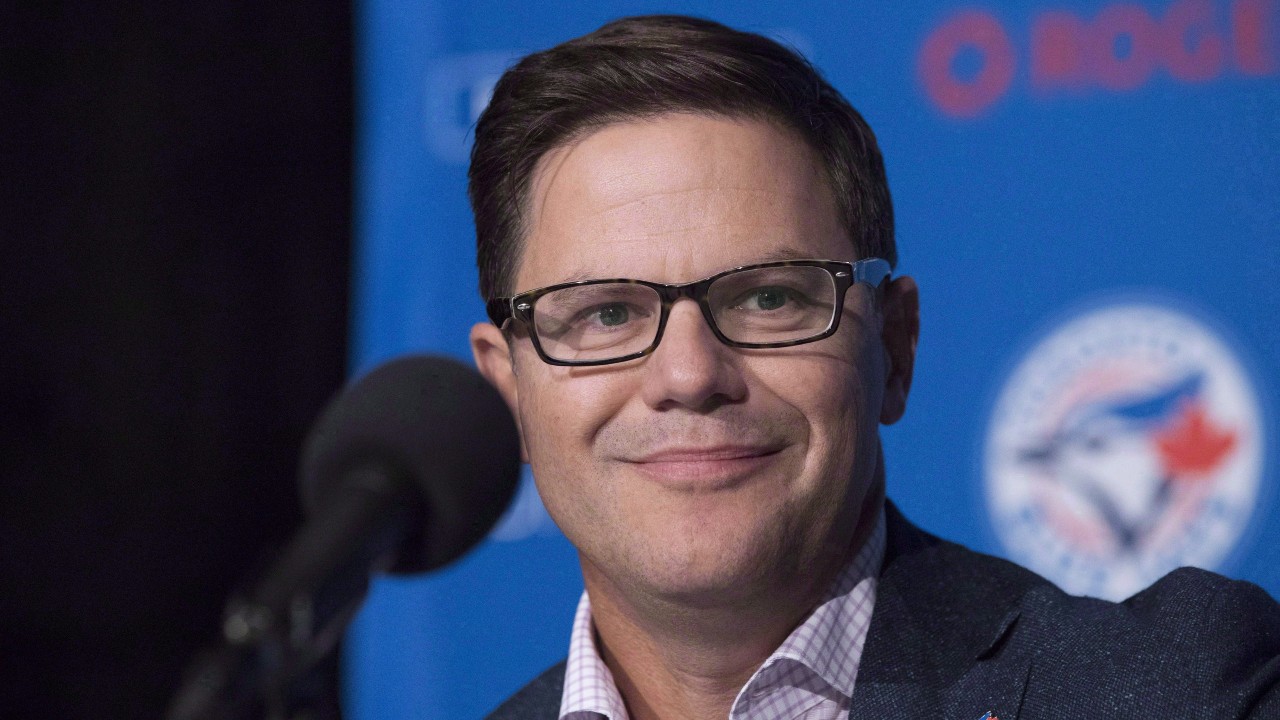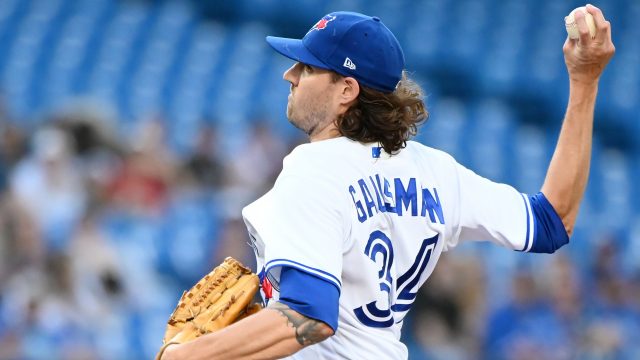TORONTO – Shane Farrell is heading into his third draft as the Toronto Blue Jays’ amateur scouting director and GM Ross Atkins has used his two first-round picks so far in win-now trades.
So, taking it personal?
“No, no, no, no,” Farrell said with a laugh Friday. “It’s been great to see the additions help out with our with our major-league club. So it’s been fun.”
Austin Martin, the 33-year-old’s pick at No. 5 overall in 2020, was the centrepiece of last year’s deadline blockbuster with the Minnesota Twins for Jose Berrios, while Gunnar Hoglund, taken at 19 a year ago, was flipped with others this spring to the Oakland Athletics for Matt Chapman.
As much as the draft is a way to replenish the farm system to build future iterations of the big-league club, it’s also a way to accumulate the type of capital that’s critical in the weeks ahead.
The draft, which begins Sunday, is a pivotal opportunity for the Blue Jays on both fronts, as they hold their own first-rounder, 23rd overall, their second-rounder at No. 60 plus two compensatory picks for the departures of Marcus Semien and Robbie Ray at Nos. 77-78 on the first day.
Throw in their third-rounder at No. 98 when the selections resume Monday and they have five picks in the top 100, the area where the vast majority of players who reach the big-leagues are selected.
“We just have more access to the higher end talent pool throughout the draft,” said Farrell. “Sunday night will be a really exciting night walking out there with four players we really like.”
The Blue Jays will have the 16th largest signing bonus pool to work with at $8,367,700, boosted nearly $1.7 million by the two comp picks.
That gives them more opportunity to be creative by moving money around to grab players who slide over signability concerns or due to health reasons, a not insignificant factor after a rash of injuries to draft-eligible collegiate pitchers.
Farrell said the spring has “decimated that demographic, specifically,” and it’s an interesting value-play market the Blue Jays haven’t been shy about shopping in.
Hoglund fit that description last year after blowing out his elbow in the leadup to the draft as his performance at Mississippi had him pushing into the top-10. Once he dropped, the Blue Jays were more than happy to get him where they did.
Back in 2020, the Blue Jays picked Nick Frasso, the hard-throwing righty recently promoted to high-A Vancouver, in the fourth round knowing he likely would need elbow surgery, which he had last year.
Even further back under the Alex Anthopoulos regime, the Blue Jays used the ninth-overall pick on Jeff Hoffman, who had potential to go first overall until his elbow gave out.
Clearly, then, there’s some longstanding comfort drafting injured pitchers.
“Each individual case is different and it’s more so about the alternatives at each pick,” said Farrell. “If that individual seems to be the best player on the board in that moment and a lot of the boxes are checked around routines and work habits and the ups and downs that come along with rehabbing an injury like that, I think that is where our comfort lies.”
Given where they’re picking in the first round, it’s no surprise that leading mock drafts have little consensus about who they end up with. Baseball America’s most recent version has them taking Gonzaga righty Gabriel Hughes, MLB Pipeline has them on James Madison University outfielder Chase DeLauter while Keith Law at The Athletic listed Tennessee outfielder Jordan Beck.
They’ll understandably need to let the draft play out in front of them and react to what happens and perhaps the extra selections lead to a few bigger swings at the expense of probability. Still Farrell cautioned that “just because we have extra picks doesn’t mean we should be a little reckless or less careful with each pick.”
“It depends on the alternatives at each pick, like I mentioned,” Farrell said in describing the club’s approach to risk tolerance versus plays for impact. “I don’t think we would lock ourselves into one specific demographic or type of player. One of the hardest parts of the draft and difficulties in amateur scouting is you’re dealing with a wide range of probabilities and ages throughout throughout the draft. So comparing a high-school hitter to a college pitcher is a really difficult task. Weighing the probabilities certainly plays an important role into our decision making and it’s mostly about alternatives with each pick.”
An additional dynamic this year is that the Blue Jays, for the first time since the pandemic, have assembled their entire draft group to finalize their board. Over the past couple of years, the personal interactions and side conversations that can impact decisions were lost as most of the work was done via remote, and now area scouts can make impassioned personal pleas for players they are desperate to get.
“Definitely don’t want it to swing decisions but you can feel it in the room,” said Farrell. “It’s also an indicator that we have good scouts that truly care about the work that they’re doing. The amateur scouting world takes a lot of time, commitment and time away from family. If you weren’t passionate about it, it would probably be troubling in general. But luckily this year no big blow ups, no impassioned speeches just yet. But we’ve still got a couple of days.”











